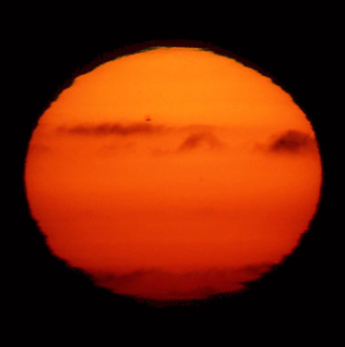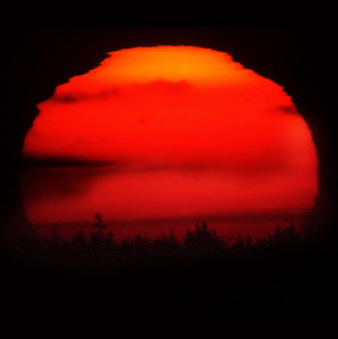Flattened Suns ripples and steps
Flattened Suns: Exploring Ripples and Steps in the Atmosphere
As the sun sets on the horizon, it often presents us with breathtaking displays of atmospheric optics. One intriguing phenomenon is the occurrence of flattened suns with ripples and steps crossing their surfaces. These mesmerizing patterns reveal the presence of air layers at different temperatures and indicate the presence of waves within these layers. In this article, we will delve into the details of this captivating atmospheric event and shed light on its underlying causes.
When observing a setting sun, we may notice that its shape appears flattened, as if it has been gently squashed. This distortion is a result of the sun's light rays passing through layers of air with varying refractive indices. As the light traverses these different densities, it bends and alters its path, ultimately reaching our eyes in a distorted form. Despite this distortion, we can still discern sunspots on the surface of the sun, highlighting their remarkable resilience against atmospheric interference.
The steps and ripples that traverse the flattened sun's surface are key indicators of the presence of air layers at different temperatures. These variations in temperature lead to changes in air density, causing the light rays to bend at different angles as they pass through each layer. Consequently, this creates a staircase-like effect, with each step representing a distinct temperature layer. The ripples, on the other hand, are manifestations of waves within these layers, adding a dynamic element to the spectacle.
To better understand the nature of these steps and ripples, we must explore the factors that contribute to their formation. Severe temperature differences between adjacent air layers give rise to stunning sunset mirages and green flashes. These optical phenomena occur when the air near the surface is significantly warmer than the layers above it. As a result, light rays from the setting sun bend more sharply when passing through these temperature gradients, leading to distorted images and vibrant color displays.
Sunset mirages, in particular, are captivating illusions that often mimic the appearance of distant objects such as islands or ships floating above the horizon. These mirages arise from the bending of light rays due to the sharp temperature gradients near the surface. When the air near the ground is colder than the air above it, the light rays curve downward, creating an inverted image of the objects below the horizon. This illusion can sometimes be so convincing that it deceives our eyes into perceiving a false reality.
Green flashes, on the other hand, are fleeting bursts of green light that occasionally accompany the setting sun. They occur when the atmosphere acts as a prism, separating sunlight into its constituent colors. The green flash is the result of green light being refracted more strongly than other colors, allowing it to momentarily dominate the visual spectrum. This phenomenon is best observed when atmospheric conditions are favorable, such as when the air is exceptionally clear and free from pollutants.
In conclusion, flattened suns with ripples and steps offer a captivating glimpse into the intricate workings of our atmosphere. These atmospheric optics phenomena arise from variations in air temperature, leading to changes in air density and the bending of light rays. The steps and ripples on the flattened sun's surface provide visual evidence of these temperature layers and waves within them. Additionally, severe temperature differences between adjacent layers give rise to sunset mirages and green flashes, adding an element of wonder to our sunset experiences. So, the next time you witness a flattened sun with ripples and steps, take a moment to appreciate the complex interplay between light and our ever-changing atmosphere.


Two images of the setting sun taken two minutes apart by Shaun Lowe (more of his images) of Nova Scotia, Canada. Above centre on the left hand image a sunspot remains visible in spite of the atmospheric distortion. The sun is noticeably flattened and is crossed by steps and ripples. The steps show the presence of air layers at different temperatures. The ripples indicate waves in the layers. More severe temperature differences between layers produce sunset mirages and green flashes.
Note: this article has been automatically converted from the old site and may not appear as intended. You can find the original article here.
Reference Atmospheric Optics
If you use any of the definitions, information, or data presented on Atmospheric Optics, please copy the link or reference below to properly credit us as the reference source. Thank you!
-
<a href="https://atoptics.co.uk/blog/flattened-suns-ripples-and-steps/">Flattened Suns ripples and steps</a>
-
"Flattened Suns ripples and steps". Atmospheric Optics. Accessed on April 30, 2024. https://atoptics.co.uk/blog/flattened-suns-ripples-and-steps/.
-
"Flattened Suns ripples and steps". Atmospheric Optics, https://atoptics.co.uk/blog/flattened-suns-ripples-and-steps/. Accessed 30 April, 2024
-
Flattened Suns ripples and steps. Atmospheric Optics. Retrieved from https://atoptics.co.uk/blog/flattened-suns-ripples-and-steps/.